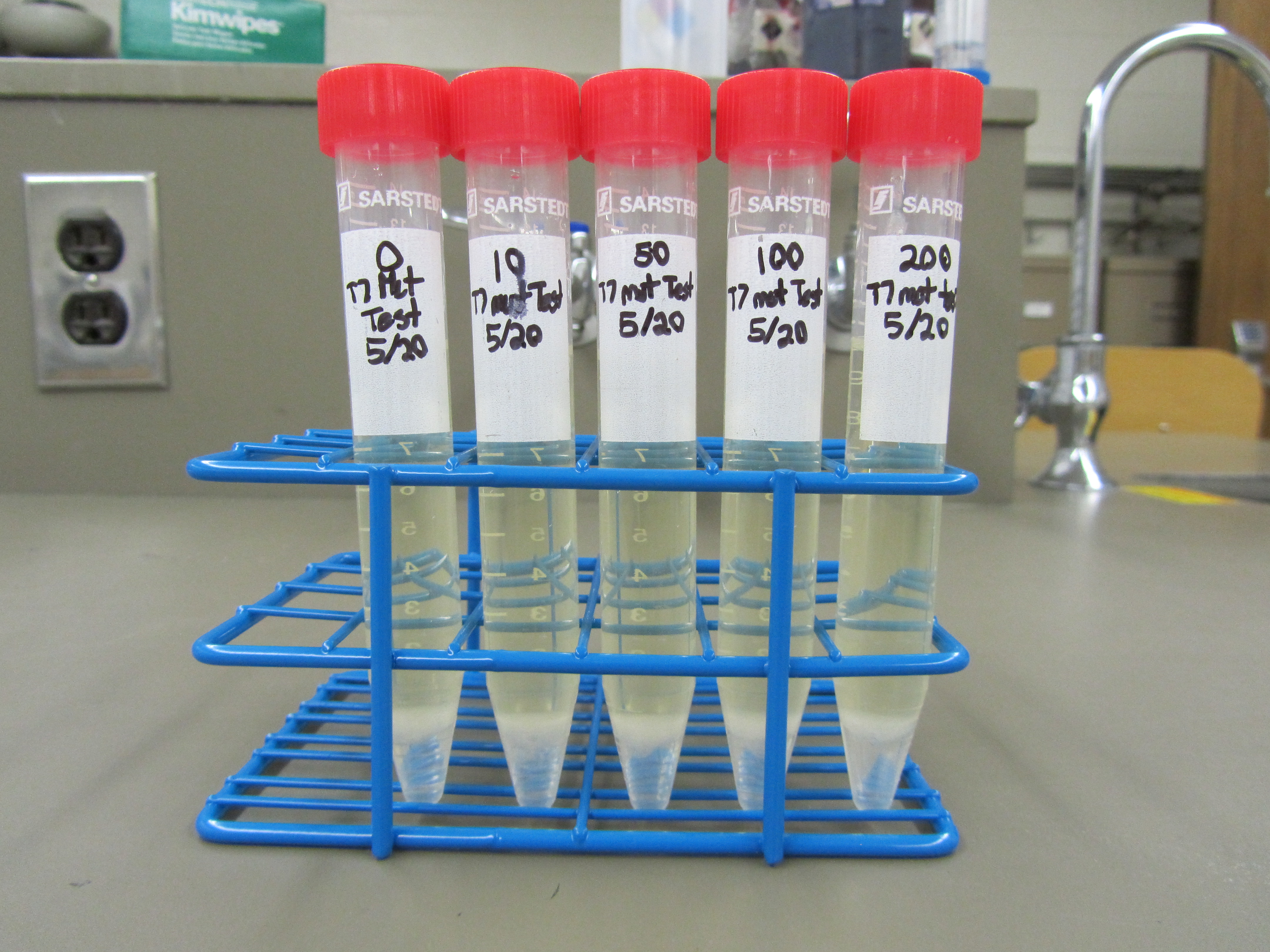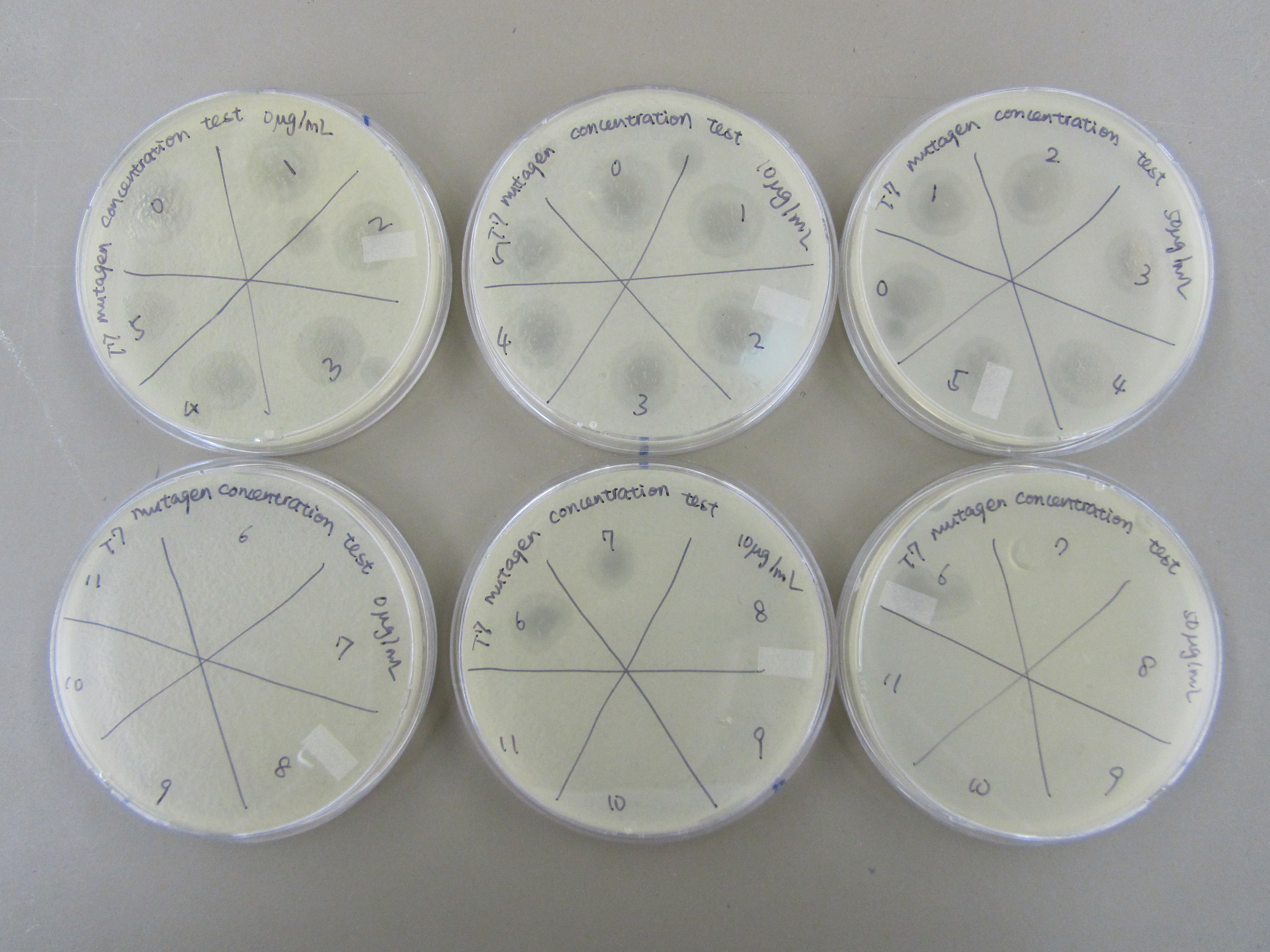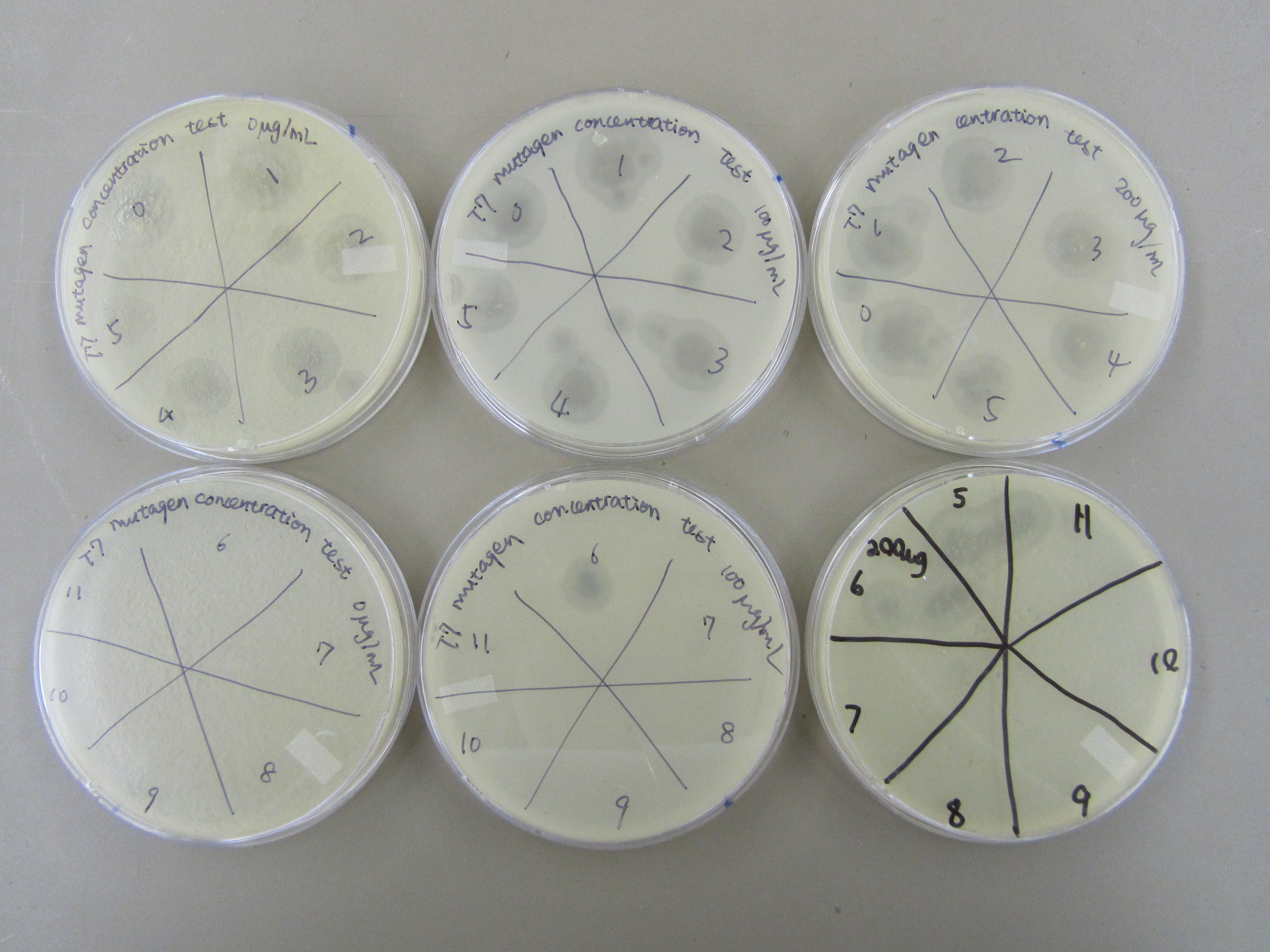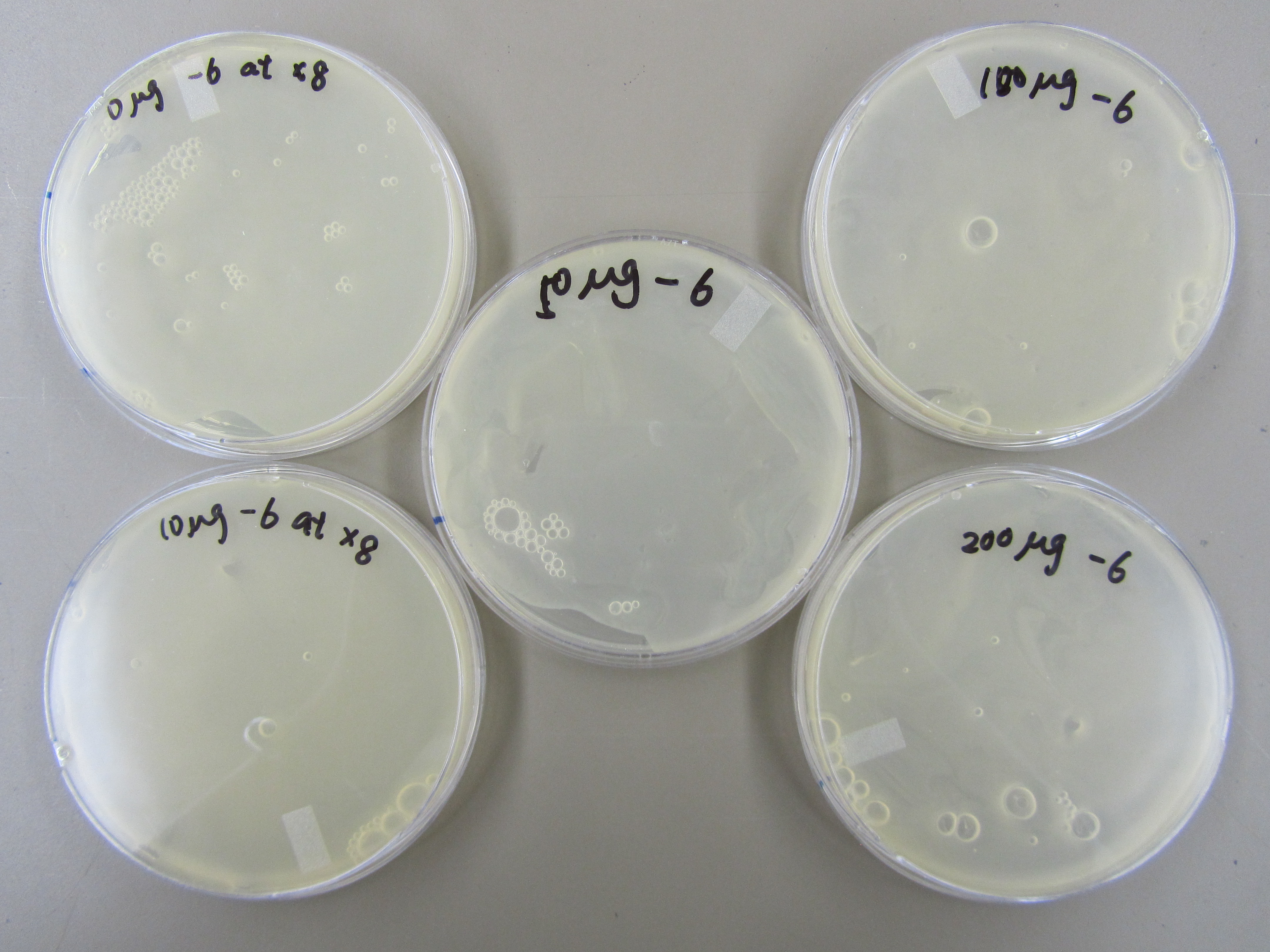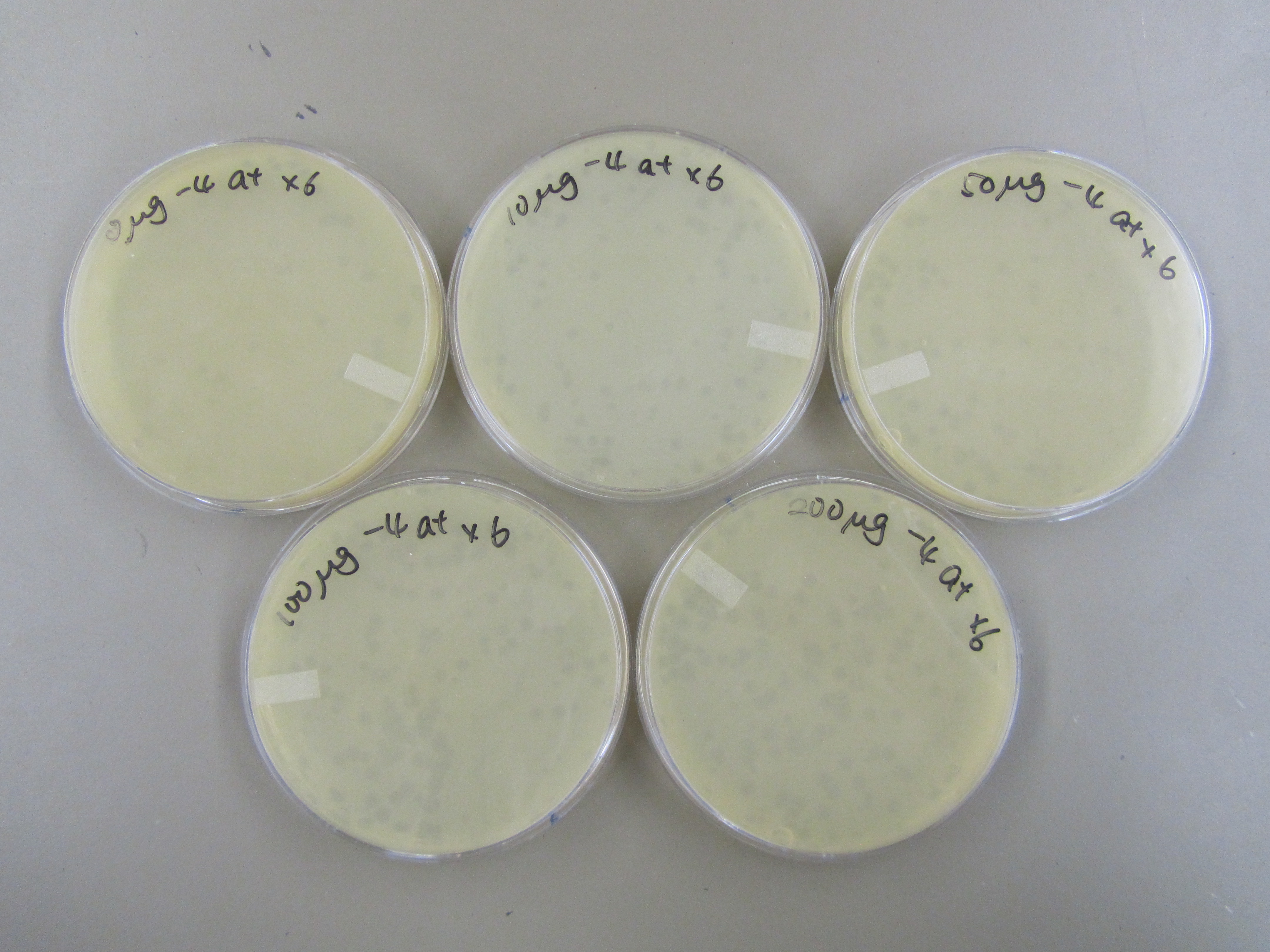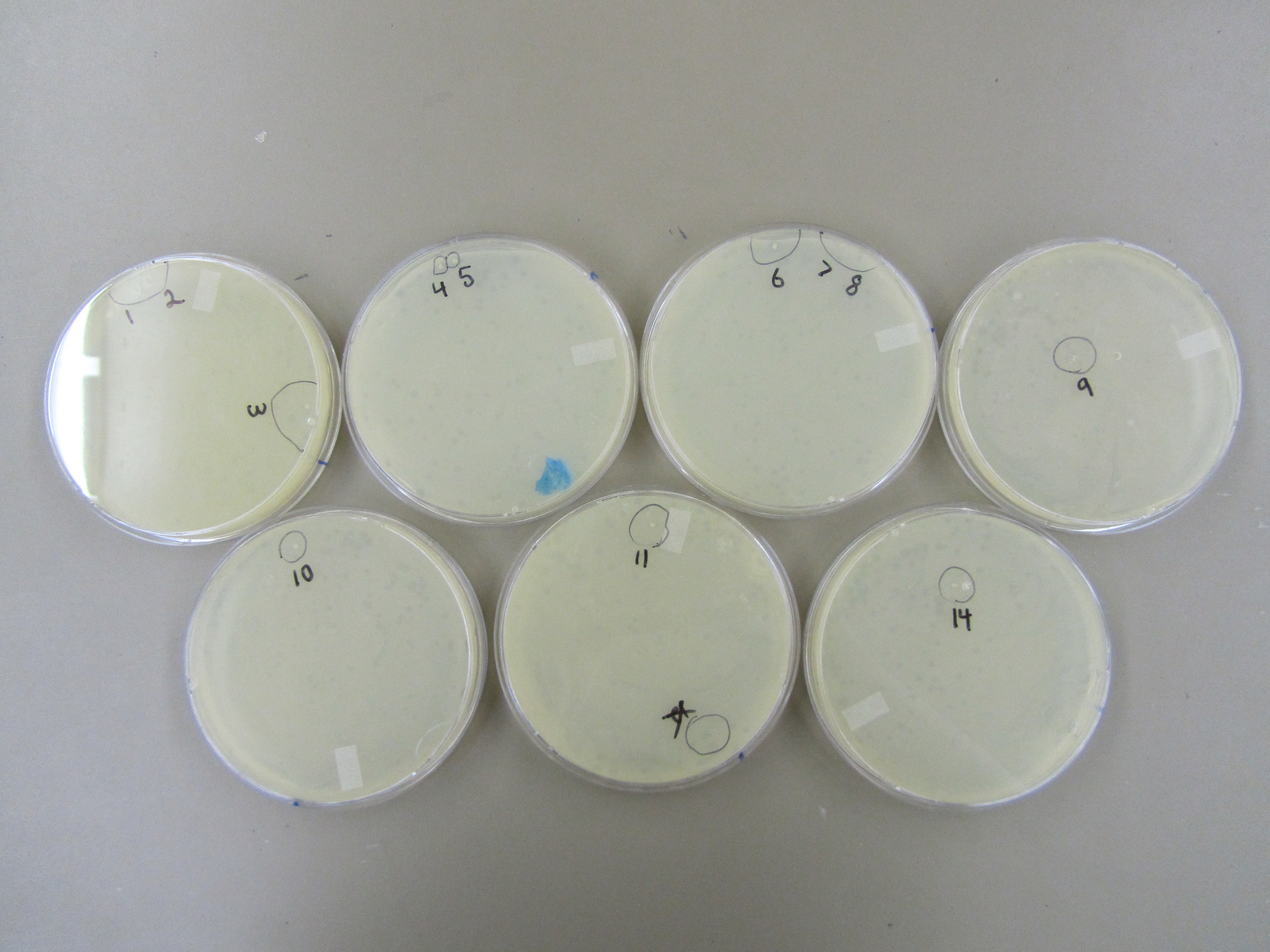|
- Small Phage
- March-April
- May-June
- July-August
- September-October
|
5.20 Mutagen Concentration Experiment
I) Purpose
- To optimize 5-bromodeoxyuridine concentration for T7 phage
II) Expected Outcome
- - Settle procedure for inducing random mutations in phage.
- - 5-bromodeoxyuridine concentration will affect phage viability, which will be seen in the different number of plaques formed. 5-bromodeoxyuridine should aslo generate random mutations that produce relatively smaller phage.
III) Reagents Used
- 5-bromodeoxyuridine stock in freezer labeled T7; various bottles of uncontaminated LB; BL21 overnight
IV) Procedure
1) Applying the mutagen (5.20)
- - From 5.13 Determining E coli concentration with spectrophotometer, we know that the concentration of E coli BL21 in a liquid overnight culture is about 3.12E8 cell/mL. We need to dilute it get our wanted E coli concentration.
- - Label 5 centrifuge tubes (15mL) 0, 10, 50, 100, and 200. To each of these test tubes, add 1.5mL of E coli overnight and 8.5mL of LB to make it a total of 10mL. This will give us approximately 5E7 cell/mL or 5E8 cell/test tube
- - To the five centrifuge tubes, add 0, 10, 50, 100, and 200 uL of 5-bromodeoxyuridine. The volume of the mutagen should correspond to the label on the test tube. Because 5-bromodeoxyuridine stock is a 10mg/mL aqueous solution, the final mutagen concentration in the five test tubes will be 0, 10, 50, 100, and 200 ug/mL.
- - Let the bacterial suspension incubate with mutagen for approximately 15min.
- - 6uL of 5.3 phage stock was added to each centrifuge tube. From 5.15 Titer Test on 5.3 T7 new Phage Stock, we know that 5.3 phage stock has 7E8 particle/20uL. Thus, to each of the test tubes, we are adding approximately 2.1E8 particle. This gives us a multiplicity of infection lower than 0.5 particles per cell.
- - Incubate phage on shaker at 37C for approximately 30min.
- - Liquid culture from the five test tubes is then centrifuged at 4000 rpm for 10 minutes to pellet cell debris. Supernatant containing phage particles is removed and 1mL of chloroform is added destroy any remaining E coli cells.
- - The stock solutions are now stored in 4C
2) Spot test (5.22)
- - Spot test was performed following procedures similar to those in 5.3 T7 Phage Amplification/Purification
3) Preliminary selection test (5.24)
- - Preliminary selection test was performed using x8 agar; -6, -7, and -8 dilutions; and procedure similar to those in 5.3 T7 Phage Selection Method Test
4) Preliminary selection test - second round (5.29)
- Preliminary selection test from 5.24 only yielded approximately one plaque per plate for -6 dilutions when they were plated at x8 top agar. This is not enough for us to start selection. As a result, we decided to either increase phage concentration to -4 or plate at x6.
- For all mutagen concentrations, -4 and -6 dilutions were plated with x6 top agar. Specific procedures used were similar to that in 5.3 T7 Phage Selection Method Test
5) Preliminary selection test - third round (6.3)
- We plated -4 dilution titers with x6 and x8 top agar using similar procedure to the previous selection test.
6) Selection - round 1 (6.7)
- From preliminary selection test - third round, we were able to determine that we need to plate at -4 dilution to have enough plaques per plate
- We plated 45 plates with -4 dilution of 200ug stock using x8 top agar. We also plated 5 plates with -3 dilution of 0ug stock using x8 top agar as control.
7) Large plaque confirmation (6.10)
- From the 45 plates above we picked 12 of the biggest plaques and plated them using x8 top agar to confirm whether the supposed mutant have stable phenotype. Specifically, we added 50uL of LB to 12 eppendorf tubes. Each plaque was then stabbed with a pipet and the pipet was dipped into the 50uL LB; we pipetted up and down several times to ensure that phage particles got in the LB.
- To 12 test tubes, we added 0.75mL of Bl21 overnight and 30uL of phage in LB prepared in the previous step. They were incubated for 20 minutes.
- To each of the test tubes, 7mL of x8 top agar was added and then plated unto LB plates.
- The plates were incubated at 37C for approximately 24 hours.
V) Results
1) Applying mutagen
- Phage did not amplify in the liquid culture with 5-bromodeoxyuridine. Calculations revealed that the initial concentration of phage in liquid culture should be approximately 2.5E7 phage particle/mL. This is on the same scale as the final phage concentration as revealed by the spot test below.
2) Spot test
- Lower concentration of mutagen seen to stimulate phage production, while higher concentration inhibits phage production
3) Preliminary selection test
- Only one or two plaques are seen on each plate. The resolution of the following photo does not allow showing.
4) Preliminary selection test 2
- -6 at x6 only showed a couple plaques on each plate. For -4 at x6, there were many plaques. It seems like the number of plaques increase as we increase the mutagen concentration.
5) Preliminary selection test - third round
- x6 top agar produced bigger/more plaques than x8 top agar. For selection purposes, we decided to use x8 top agar from now on.
6) Selection - round 1
- We saw a few bigger plaques (compared to the average plaque sizes) from the 45 plates. These are ones we are interested in.
7) Large plaque confirmation
- Large scale contamination prevented any plaque from showing up.
VI) Conclusion
Because there appears to be no visible decrease in the number of plaques as the concentration of mutagen increases, mutagenesis probably didn't occur effectively. In order to hopefully fix this, we will try mutagenesis again with a minimal media instead of LB. (See 6.12 Mutagen Concentration Test - Perfected Protocol)
|
 "
"
